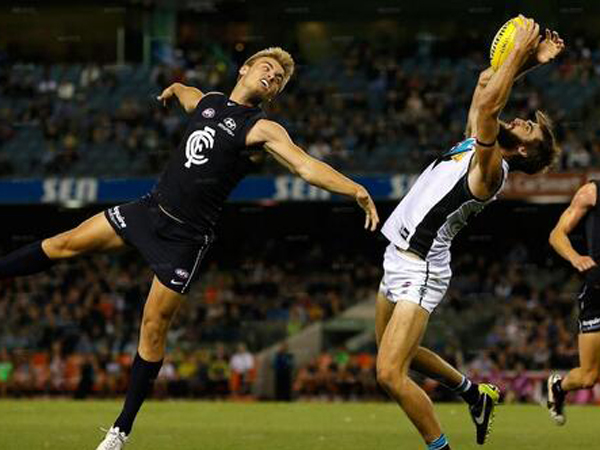In 2013, Research-born midfielder Josh Turner took home the best-and-fairest award for the Northern Knights, a team in the Under 18s TAC Cup competition.
It was recognition for a superb year for Turner, who played every game and averaged an impressive 24 disposals and five tackles throughout the season.
The midfielder also tied for second place in the Morrish Medal, the TAC Cup’s best-and-fairest award.
In an article comprising of opinions from those involved throughout the 10 TAC Cup football clubs, Turner was praised for his consistency and his ability to shoulder “a large responsibility” during the season.
These are the sort of compliments attributed to a footballer who is ready to play in the AFL.
Yet, in November of last year, Turner failed to be selected in the National Draft.
Why, in a sport in which matches and teams are supposedly defined by the quality and quantity of ball-winning, hard-running midfielders, was Turner overlooked?
And why, despite an average number of overall midfielders chosen in the 2013 AFL National Draft, were just 10 – the lowest number since 2008 – chosen with the first 20 picks?
Perhaps recruiters deemed that Turner was simply not up to the physical requirements of AFL football, as the midfielder stands at six feet tall, less than two inches below the average height of an AFL player.
However, elite midfielders such as Sam Mitchell (5’11”) and Brent Harvey (5’6”) prove that small rovers can still dominate.
So why the sudden change towards key position players?
A look back at history will show that it has been over 10 years since the Brisbane Lions’ legendary midfield paved the way for three consecutive premierships.
In doing so, the Lions opened the door for a new breed of champion football team, one that was defined by its engine room.
Since then, teams have rushed to build their sides around an unstoppable on-ball division.
If you look at most sides in the early stages of the 2014 season, every team in the top eight from 2013 has a midfield that could be labelled among the best in the competition.
Similar cases could also be made for North Melbourne, Essendon, Adelaide, West Coast and even the Bulldogs.
In the AFL’s 2013 official player rankings, only 10 key position players were ranked in the top 50. Three of these players – Lance Franklin, Jarryd Roughead and Shaun Burgoyne – came from Hawthorn.
The Hawks went on to win last year’s premiership, propelled by a team full of key position players that could capitalise on its star-studded midfield.
Therefore, with centre lineups so even in quality among AFL clubs, it is possible that on-ball hopefuls such as Turner were overlooked because clubs are thinking outside the square – literally.
It seems that teams are gaining a winning edge through key position players, particularly those who can capitalise on their midfield’s efficiency.
FT: @PAFC 18.12 (120) defeated @CarltonFC 12.15 (87). Westhoff 5 & Gray 4 were the major goal kickers #AFLBluesPower pic.twitter.com/zrZ9QJQB31
— AFL (@AFL) March 16, 2014
When midfielders total 80 per cent of the game’s elite, it can be argued that the majority of teams have either consolidated a strong centre lineup or are fast approaching one.
This would also explain why the 2013 National Draft reflected a demand for key position players.
The crux of the matter, and a trend that seems to be spreading throughout most teams in the competition, is that clubs are prioritising key position players over midfielders.
And though midfields may still define teams, it seems that key position players are starting to define games.
Callum O’Connor is a Bachelor of Journalism (Sport) student at La Trobe University.







